|

|
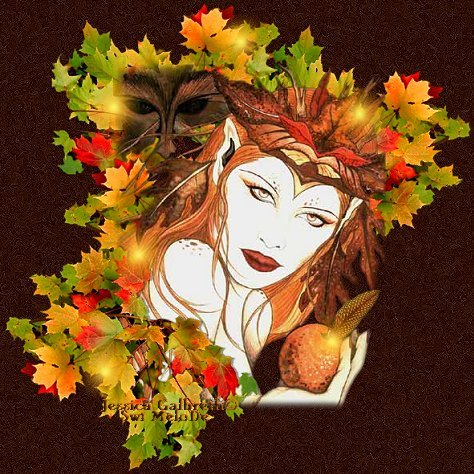



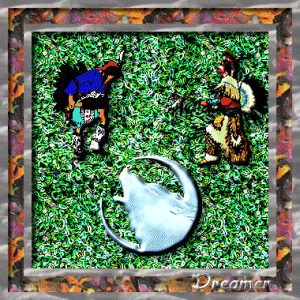
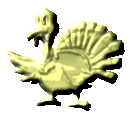
|
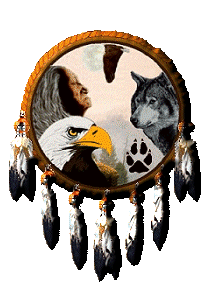
A THANKSGIVING PRAYER FROM THE IROQUOIS (SENECA) PEOPLE
Gwa! Gwa! Gwa!
Now the time has come!
Hear us, Lord of the Sky!
We are here to speak the truth,
for you do not hear lies,
We are your children, Lord of the Sky.
Now begins the Gayant' gogwus
This sacred fire and sacred tobacco
And through this smoke
We offer our prayers
We are your children, Lord of the Sky.
Now in the beginning of all things
You provided that we inherit your creation
You said: I shall make the earth
on which people shall live
And they shall look to the earth as their mother
And they shall say, "It is she who supports us."
You said that we should always be thankful
For our earth and for each other
So it is that we are gathered here
We are your children, Lord of the Sky.
Now again the smoke rises
And again we offer prayers
You said that food should be placed beside us
And it should be ours in exchange for our labor.
You thought that ours should be a world
where green grass of many kinds should grow
You said that some should be medicines
And that one should be Ona'o
the sacred food, our sister corn
You gave to her two clinging sisters
beautiful Oa'geta, our sister beans
and bountiful Nyo'sowane, our sister squash
The three sacred sisters; they who sustain us.
This is what you thought, Lord of the Sky.
Thus did you think to provide for us
And you ordered that when the warm season comes,
That we should see the return of life
And remember you, and be thankful,
and gather here by the sacred fire.
So now again the smoke arises
We the people offer our prayers
We speak to you through the rising smoke
We are thankful, Lord of the Sky.
(Liberally translated)
Chuck Larsen, Seneca
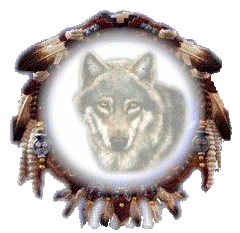

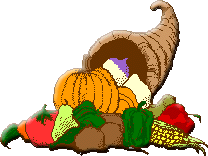
CORNUCOPIA, korn-yoo-KO-pee-uh
One of the most recognizable symbols of Thanksgiving
is the cornucopia, also called horn of plenty. It is a
decorative motif, originating in ancient Greece, that symbolizes
abundance. The original cornucopia was a curved goat's horn
filled to overflowing with fruit and grain. It symbolizes the horn
possessed by Zeus's nurse, he Greek nymph Amalthaea, which could be filled
with whatever the owner wished.
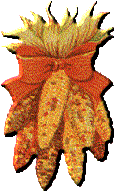
|
|
|
|


THE PLYMOUTH THANKSGIVING STORY
When the Pilgrims crossed the Atlantic Ocean in 1620,
they landed on the rocky shores of a territory that was
inhabited by the Wampanoag (Wam pa NO ag) Indians. The
Wampanoags were part of the Algonkian-speaking peoples, a
large group that was part of the Woodland Culture area.
These Indians lived in villages along the coast of what is
now Massachusetts and Rhode Island. They lived in round-
roofed houses called wigwams. These were made of poles
covered with flat sheets of elm or birch bark. Wigwams
differ in construction from tipis that were used by Indians
of the Great Plains.
The Wampanoags moved several times during each year in
order to get food. In the spring they would fish in the
rivers for salmon and herring. In the planting season they
moved to the forest to hunt deer and other animals. After
the end of the hunting season people moved inland where
there was greater protection from the weather. From
December to April they lived on food that they stored
during the earlier months.
The basic dress for men was the breech clout, a length
of deerskin looped over a belt in back and in front. Women
wore deerskin wrap-around skirts. Deerskin leggings and fur
capes made from deer, beaver, otter, and bear skins gave
protection during the colder seasons, and deerskin
moccasins were worn on the feet. Both men and women usually
braided their hair and a single feather was often worn in
the back of the hair by men. They did not have the large
feathered headdresses worn by people in the
Plains Culture area.
There were two language groups of Indians in New
England at this time. The Iroquois were neighbors to the
Algonkian-speaking people. Leaders of the Algonquin and
Iroquois people were called "sachems" (SAY chems). Each
village had its own sachem and tribal council. Political
power flowed upward from the people. Any individual, man or
woman, could participate, but among the Algonquins more
political power was held by men. Among the Iroquois,
however, women held the deciding vote in the final
selection of who would represent the group. Both men and
women enforced the laws of the village and helped solve
problems. The details of their democratic system were so
impressive that about 150 years later Benjamin Franklin
invited the Iroquois to Albany, New York, to explain their
system to a delegation who then developed the
"Albany Plan of Union." This document later served as a
model for the Articles of Confederation
and the Constitution of the United States.
These Indians of the Eastern Woodlands called the
turtle, the deer and the fish their brothers. They
respected the forest and everything in it as equals.
Whenever a hunter made a kill, he was careful to leave
behind some bones or meat as a spiritual offering, to help
other animals survive. Not to do so would be considered
greedy. The Wampanoags also treated each other with
respect. Any visitor to a Wampanoag home was provided with
a share of whatever food the family had, even if the supply
was low. This same courtesy was extended to the Pilgrims
when they met.
We can only guess what the Wampanoags must have
thought when they first saw the strange ships of the
Pilgrims arriving on their shores. But their custom was to
help visitors, and they treated the newcomers with
courtesy. It was mainly because of their kindness that the
Pilgrims survived at all. The wheat the Pilgrims had
brought with them to plant would not grow in the rocky
soil. They needed to learn new ways for a new world, and
the man who came to help them was called "Tisquantum"
(Tis SKWAN tum) or "Squanto" (SKWAN toe).
Squanto was originally from the village of Patuxet
(Pa TUK et) and a member of the Pokanokit Wampanoag nation.
Patuxet once stood on the exact site where the Pilgrims
built Plymouth. In 1605, fifteen years before the Pilgrims
came, Squanto went to England with a friendly English
explorer named John Weymouth. He had many adventures and
learned to speak English. Squanto came back to New England
with Captain Weymouth. Later Squanto was captured by a
British slaver who raided the village and sold Squanto to
the Spanish in the Caribbean Islands. A Spanish Franciscan
priest befriended Squanto and helped him to get to Spain
and later on a ship to England. Squanto then found Captain
Weymouth, who paid his way back to his homeland. In England
Squanto met Samoset of the Wabanake (Wab NAH key) Tribe,
who had also left his native home with an English explorer.
They both returned together to Patuxet in 1620. When they
arrived, the village was deserted and there were skeletons
everywhere. Everyone in the village had died from an
illness the English slavers had left behind. Squanto and
Samoset went to stay with a neighboring village of
Wampanoags.
One year later, in the spring, Squanto and Samoset
were hunting along the beach near Patuxet. They were
startled to see people from England in their deserted
village. For several days, they stayed nearby observing the
newcomers. Finally they decided to approach them. Samoset
walked into the village and said "welcome," Squanto soon
joined him. The Pilgrims were very surprised to meet two
Indians who spoke English.
The Pilgrims were not in good condition. They were
living in dirt-covered shelters, there was a shortage of
food, and nearly half of them had died during the winter.
They obviously needed help and the two men were a welcome
sight. Squanto, who probably knew more English than any
other Indian in North America at that time, decided to stay
with the Pilgrims for the next few months and teach them
how to survive in this new place. He brought them deer meat
and beaver skins. He taught them how to cultivate corn and
other new vegetables and how to build Indian-style houses.
He pointed out poisonous plants and showed how other plants
could be used as medicine. He explained how to dig and cook
clams, how to get sap from the maple trees, use fish for
fertilizer, and dozens of other skills needed for their survival.
By the time fall arrived things were going much better
for the Pilgrims, thanks to the help they had received. The
corn they planted had grown well. There was enough food to
last the winter. They were living comfortably in their
Indian-style wigwams and had also managed to build one
European-style building out of squared logs. This was their
church. They were now in better health, and they knew more
about surviving in this new land. The Pilgrims decided to
have a thanksgiving feast to celebrate their good fortune.
They had observed thanksgiving feasts in November as
religious obligations in England for many years before
coming to the New World.
The Algonkian tribes held six thanksgiving festivals
during the year. The beginning of the Algonkian year was
marked by the Maple Dance which gave thanks to the Creator
for the maple tree and its syrup. This ceremony occurred
when the weather was warm enough for the sap to run in the
maple trees, sometimes as early as February. Second was the
planting feast, where the seeds were blessed. The
strawberry festival was next, celebrating the first fruits
of the season. Summer brought the green corn festival to
give thanks for the ripening corn. In late fall, the
harvest festival gave thanks for the food they had grown.
Mid-winter was the last ceremony of the old year. When the
Indians sat down to the "first Thanksgiving" with the
Pilgrims, it was really the fifth thanksgiving of the year for them!
Captain Miles Standish, the leader of the Pilgrims,
invited Squanto, Samoset, Massasoit (the leader of the
Wampanoags), and their immediate families to join them for
a celebration, but they had no idea how big Indian families
could be. As the Thanksgiving feast began, the Pilgrims
were overwhelmed at the large turnout of ninety relatives
that Squanto and Samoset brought with them. The Pilgrims
were not prepared to feed a gathering of people that large
for three days. Seeing this, Massasoit gave orders to his
men within the first hour of his arrival to go home and get
more food. Thus it happened that the Indians supplied the
majority of the food: Five deer, many wild turkeys, fish,
beans, squash, corn soup, corn bread, and berries. Captain
Standish sat at one end of a long table and the Clan Chief
Massasoit sat at the other end. For the first time the
Wampanoag people were sitting at a table to eat instead of
on mats or furs spread on the ground. The Indian women sat
together with the Indian men to eat. The Pilgrim women,
however, stood quietly behind the table and waited until
after their men had eaten, since that was their custom.
For three days the Wampanoags feasted with the
Pilgrims. It was a special time of friendship between two
very different groups of people. A peace and friendship
agreement was made between Massasoit and Miles Standish
giving the Pilgrims the clearing in the forest where the
old Patuxet village once stood to build their new town of Plymouth.
It would be very good to say that this friendship
lasted a long time; but, unfortunately, that was not to be.
More English people came to America, and they were not in
need of help from the Indians as were the original
Pilgrims. Many of the newcomers forgot the help the Indians
had given them. Mistrust started to grow and the friendship
weakened. The Pilgrims started telling their Indian
neighbors that their Indian religion and Indian customs
were wrong. The Pilgrims displayed an intolerance toward
the Indian religion similar to the intolerance displayed
toward the less popular religions in Europe. The
relationship deteriorated and within a few years the
children of the people who ate together at the first
Thanksgiving were killing one another in what came to be
called King Phillip's War.
It is sad to think that this happened, but it is
important to understand all of the story and not just the
happy part. Today the town of Plymouth Rock has a
Thanksgiving ceremony each year in remembrance of the first
Thanksgiving. There are still Wampanoag people living in
Massachusetts. In 1970, they asked one of them to speak at
the ceremony to mark the 350th anniversary of the Pilgrim's
arrival. Here is part of what was said:
"Today is a time of celebrating for you -- a time of
looking back to the first days of white people in America.
But it is not a time of celebrating for me. It is with a
heavy heart that I look back upon what happened to my
People. When the Pilgrims arrived, we, the Wampanoags,
welcomed them with open arms, little knowing that it was
the beginning of the end. That before 50 years were to
pass, the Wampanoag would no longer be a tribe. That we and
other Indians living near the settlers would be killed by
their guns or dead from diseases that we caught from them.
Let us always remember, the Indian is and was just as human
as the white people.
Although our way of life is almost gone, we, the
Wampanoags, still walk the lands of Massachusetts. What has
happened cannot be changed. But today we work toward a
better America, a more Indian America where people and
nature once again are important."
Thanks for this wonderful material of Thanksgiving goes to:
http://www.2020tech.com/thanks/
20/20 Technologies

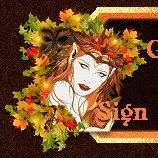 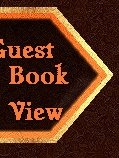


p align="center">

|
|
|
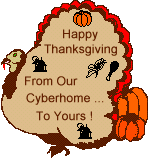

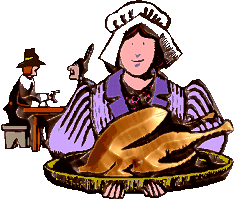


|